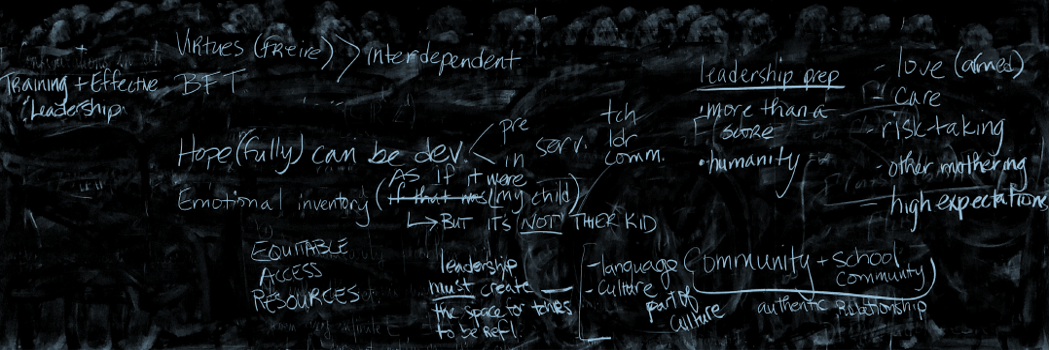This week’s readings and video left me thinking a lot about hope and how essential it is to cultivate a critical hope in ourselves as educators so that our classrooms become spaces of critical reflection and action. Critical reflection without hope is misery, and hope without critical reflection is false, a lie. “False hope would have us believe in individualized notions of success and suffering, but audacious hope demands that we reconnect to the collective by struggling alongside one another, sharing in the victories and the pain. This solidarity is the essential ingredient for “radical healing” (Ginwright, 2009), and healing is an often-overlooked factor for improving achievement in urban schools” (Duncan-Andrade). This week, I have also been thinking a lot about this idea – the idea of the illusion of individualism and the reality of collectivism. When we talk about critical hope, it means we are recognizing the system and our role in perpetuating or disrupting oppression. So much of the deficit rhetoric that we hear about students is directed at the individual, and it distracts us from critically analyzing the system. Critical hope, to me, means critically examining the system and critically exploring the opportunity that we all have at each moment to either perpetuate or disrupt, and the decision that we have to lean into acts of disruption. When we shift our thinking towards a more critical consciousness, or an awareness that our freedom is tied up in one another, we can experience empathy. We can feel empathy only when we genuinely understand and feel our connection to one another as human beings. By recognizing the humanity in ourselves and others, we can experience this collective solidarity and join in our collective fight. “Second, community organizations provide pathways to action, which compel individuals and collectives to claim power and control over sometimes daunting social conditions” (Ginwright). This quote speaks to the recognition of our role in collective suffering and victory as well as the NEED for us to work with our communities in this work, because we can’t do it alone.
Radical Care Sp21
Teaching & Leading for Justice in Schools




Hi Lindsay,
I really appreciated your comments! In particular, this line struck me: “the idea of the illusion of individualism and the reality of collectivism”. The contrast of individualism and collectivism really stood out to me in the readings, too. I wonder how we begin to address this, given how firmly set the “value” of individualism is in our country’s racial capitalism. I appreciated the framework offered by Cammarota of awareness at every level – individual, communal, and global.
I really like that idea of being critical of the ways we perpetuate and/or disrupt. I’m even thinking that this will be a question I use to do some reflective work. Sometimes it feels overwhelming when you are fighting for collective solidarity but are facing the daily struggles of a divisive society. Whether it be intentional or not. However, I fully agree we can’t do it alone.